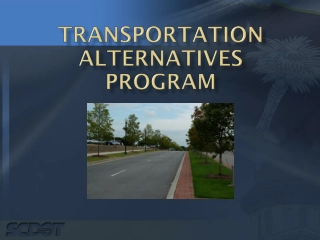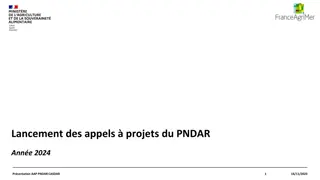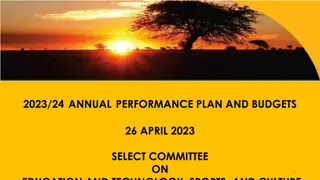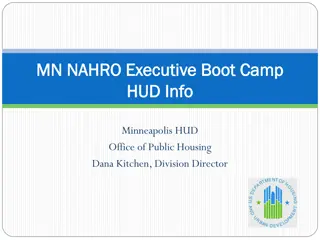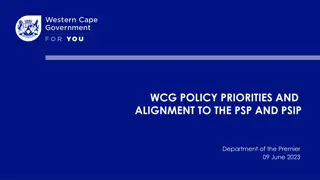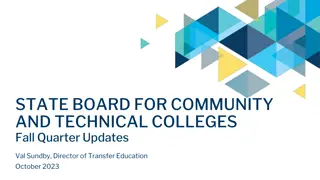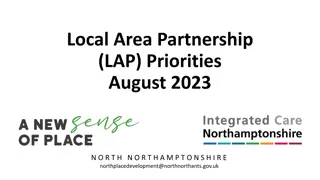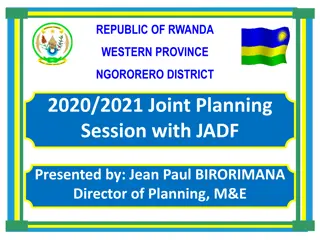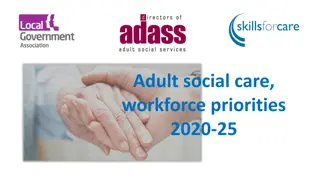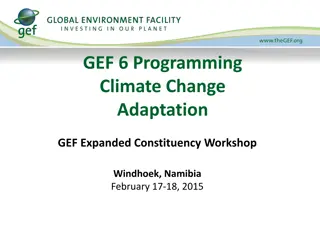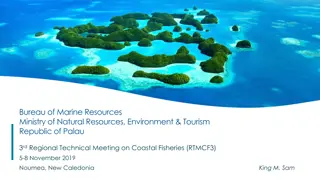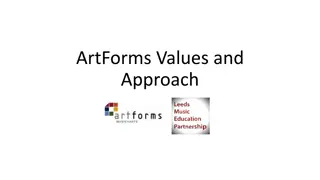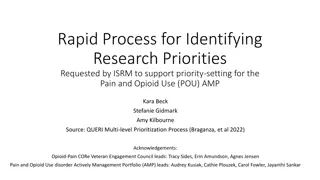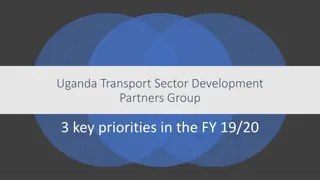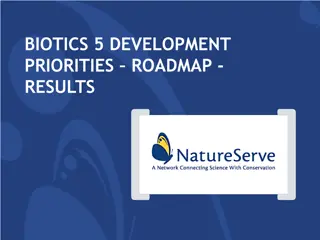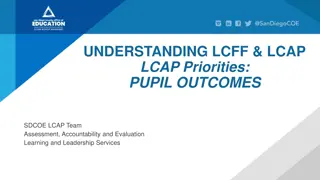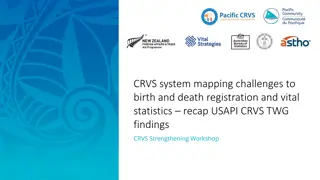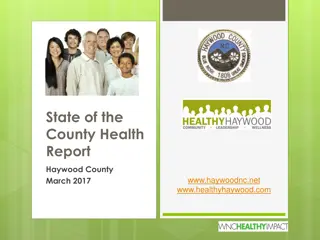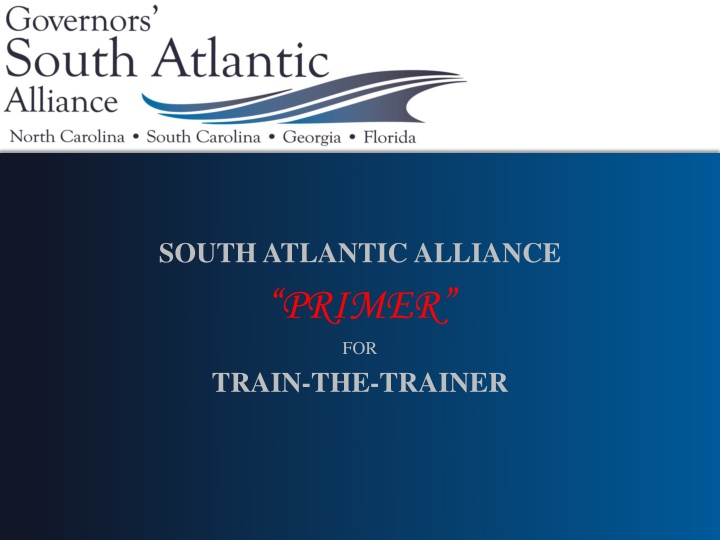
South Atlantic Alliance Primer for Train-the-Trainer Information
Discover the history, mission, priorities, and executive structure of the South Atlantic Alliance established in 2006 under the SERPPAS Initiative. Learn about the collaboration among NC, SC, GA, and FL to enhance coastal and marine resources, focusing on healthy ecosystems, waterfronts, clean waters, and disaster resilience.
Download Presentation

Please find below an Image/Link to download the presentation.
The content on the website is provided AS IS for your information and personal use only. It may not be sold, licensed, or shared on other websites without obtaining consent from the author. If you encounter any issues during the download, it is possible that the publisher has removed the file from their server.
You are allowed to download the files provided on this website for personal or commercial use, subject to the condition that they are used lawfully. All files are the property of their respective owners.
The content on the website is provided AS IS for your information and personal use only. It may not be sold, licensed, or shared on other websites without obtaining consent from the author.
E N D
Presentation Transcript
SOUTH ATLANTIC ALLIANCE PRIMER FOR TRAIN-THE-TRAINER
Alliance History The Alliance initiated in 2006 under the Department of Defense SERPPAS Initiative (Southeast Regional Partnership for Planning and Sustainability). By the end of 2007 an ad hoc planning team, now the Executive Planning Team (EPT), created a framework for the Governors South Atlantic Alliance. A formal agreement between the four states (NC, SC, GA, and FL), executed in May 2009, specified that the Alliance will prepare a Governors South Atlantic Alliance Action Plan which will be reviewed annually for progress and updated every five years for relevance of content.
Alliance Mission and Purpose The intent of the Alliance is to promote collaboration among the four states, .., to sustain and enhance the region s coastal and marine resources.
Establishment of Priorities The Framework document specified four initial Priority Issue Areas and broad goals approved by the Governors as being of concern to all four states: Healthy Ecosystems Working Waterfronts Clean Coastal and Ocean Waters Disaster-Resilient Communities
South Atlantic Alliance Executive Group Governors of North Carolina, South Carolina, Georgia, and Florida Vision Coordination /Inter- Governmental Integration Supporting Partners INPUT South Atlantic Alliance Steering Group Designated by Governor / Executive Group Federal Partners Local /Municipal Partners SUPPORT Direction Coordination / Inter and Intra - Agency Integration Academic / Research Partners INPUT South Atlantic Alliance Issue Area Technical Teams Private Sector Partners NGO Alliance Partners SUPPORT Disaster- Resilient Communities Working Waterfronts Regional Organizations State Team Lead State Team Lead Crosscutting Considerations Dimensions Environmental Quality Natural Resources (biological and physical) Human, Social and Economic Resources Cultural, Heritage and Historical Resources Military and National Security Critical Tools to be Integrated Mapping (including bathymetry) Education and Public Awareness Ocean Observing and Monitoring Scientific Research and Planning Regional Fisheries Management Data Integration and Management Modeling, and Trends Analysis Clean Coastal and Ocean Waters Healthy Ecosystems State Team Lead State Team Lead Execution
The Belly of the Beast Executive Planning Team (EPT) Disaster- Resilient Communities Healthy Ecosystems Working Waterfronts Clean Coastal & Ocean Waters Watershed Improvement Workgroup
The Call to Action Governors South Atlantic Alliance Action Plan
National Policy Context At the national level, the potential benefits . were highlighted in the Pew Oceans Commission Report (2003) and the U.S. Commission on Ocean Policy (2004). Since that time, states across the United States have initiated regional ocean partnerships. Among the results have been increased data collection and scientific research, ., increased stakeholder involvement and new funding to support marine and coastal management efforts.
Clean Coastal and Ocean Waters The Goal of Clean Coastal and Ocean Waters (C.C.O.W.) is to enhance managers abilities to effectively target prevention, enforcement, response, mitigation activities, and integrate coastal and ocean observing systems in the South Atlantic.
Clean Coastal and Ocean Waters Objectives and Actions C.C.O.W. 1 Improve watershed management of point and nonpoint source pollution to reduce adverse impacts to water quality. Establish a regional technical level work group for the purpose of sharing watershed water quality improvement processes. Develop recommendations on processes and protocols to transfer knowledge and implement best management practices for point and non point source controls, and to encourage smart growth and green infrastructure (including monitoring based performance measures).
a living, working document Governors' South Atlantic Alliance Implementation Plan 2011
Clean Coastal and Ocean Waters Objective C.C.O.W. 1. Improve watershed management of point and nonpoint source pollution to reduce adverse impacts to water quality. Action CCOW1A: Establish a regional technical level work group for the purpose of sharing watershed water quality improvement processes. Implementation Steps: ????; appoint in absentia, make them an offer they can t refuse.
Clean Coastal and Ocean Waters Action CCOW1C: Develop recommendations on processes and protocols to transfer knowledge and implement BMPs for point and non- point source controls, and to encourage smart growth and green infrastructure (including monitoring-based performance measures). Implementation Steps: Produce a compendium of accepted BMPs (done). http://southatlanticalliance.org/wp- content/uploads/2013/12/GSAA- CoastWaterQualityBMPs_October2015.pdf Host a workshop to summarize the use of structural and non- structural BMPs for storm water controls and fresh water influx into salt water systems and performance measures.
What Next? Message from GSAA Leadership: .The current formal structure of the Alliance will be coming to a close and we will be transitioning during calendar year 2016 to pursue new approaches to regional collaboration in line with the needs of the partners .


